
Official Edgar Rice Burroughs Tribute Site Since 1996 ~ Over 15,000 Webpages in Archive Presents Volume 1514 RADIO FREE VENUS
|

Official Edgar Rice Burroughs Tribute Site Since 1996 ~ Over 15,000 Webpages in Archive Presents Volume 1514 RADIO FREE VENUS
|
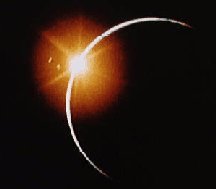
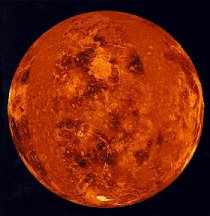
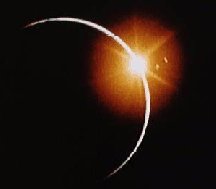
|
CONTENTS (12,000 words) Ralph Milne Farley and Roger Sherman Hoar The Radio Man Radio Beasts Radio Planet Radio Menace, Radio Flyers Radio Gun Runners Radio Man Returns, the Radio Minds of Mars and others Ralph Milne Farley, Pulp Writer Radio??? Farley's Final Solutions Cupians, the Radio Humans Formians: Big Ants or Black Tharks? Poros and Zarovia and Amtor, Oh My! Locating Farley's Poros on Venus, or Cupia, Here I Come!
Ralph Milne Farley and Roger Sherman Hoar 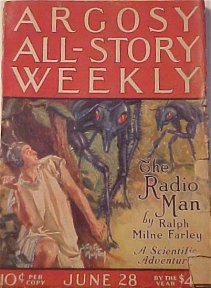 Before
Edgar Rice Burroughs wrote his Venus books, before Otis Adelbert Kline
published his Venus series, there was one major pulp writer who wrote a
series of Barsoomian adventures set on the planet Venus. This
series was a deliberate homage to Burroughs Martian books, and its author
was actually a close friend of Edgar Rice Burroughs. Before
Edgar Rice Burroughs wrote his Venus books, before Otis Adelbert Kline
published his Venus series, there was one major pulp writer who wrote a
series of Barsoomian adventures set on the planet Venus. This
series was a deliberate homage to Burroughs Martian books, and its author
was actually a close friend of Edgar Rice Burroughs.
The man was Ralph Milne Farley, and the series was the Radio Man books. Now, Farley himself is quite an interesting character. His real name was actually Roger Sherman Hoar, a moniker that brings tears to my eyes and turned ‘Ralph Milne Farley’ into a sound choice. Think about it? Roger Whore? Share-Man Whore? Ouch! This guy must have gone through hell. Hoar was actually quite a cool character. Born 1887 and died 1963, he counted among his ancestors a signatory to the declaration of independence. His father had been a Senator, and he himself served as a state Senator in Massachusetts. Hoar was a real renaissance man, he wrote books on constitutional law, was an Assistant Attorney General, was educated at harvard, taught engineering and mathematics, at the close of WWI he invented a system for aiming artillery at night, using the stars, which was revolutionary for its time. A couple of conclusions fall like ripe fruit from this biography. One is that this guy was the real deal. This was a genuinely brilliant, highly educated, extremely competent man. The other thing was that he didn't have to write. A Radio Man novel wasn't putting bread on his table, not in the 1920s. Rather, he loved the stuff. His novels, and his obvious inspiration from Burroughs' Martian works, were hardly commercial. If the Radio Man series was ERB inspired, it wasn't a commercial rip off, rather, it was an honest to god tribute. A labour of love by a man who was simply swept away by John Carter and Barsoom, and was inspired to write his own. Frankly, I think that's just terrific, and that kind of inspired native enthusiasm, the simple love of the story and the craft, that makes me forgive a lot. The thing is that as readers, its important that we love what we read. We read Burroughs for the sheer joy of the experience, the pleasure of it. Other readers get it from John Updike I suppose, good for them. But I think it's a wonderful testament when someone is so inspired and so joyed by what he reads, that he's motivated to pick up pen and join the art. Ultimately, Hoar or Farley never needed to write. He made far and away enough money doing other things, and had satisfying accomplishments elsewhere. It wasn't love of money or status or whatever. In fact, in his circles, his sort of writing was lower class and disreputable. He did it cause he loved it, and that is to be respected.
The Radio Man
The resemblances to the Princess of Mars are unmistakable. Like John Carter, Myles Cabot gets teleported to and ends up naked on a strange planet. He finds the gravity is lighter, and wonders if he's on Mars. As with John Carter, inhuman giant aliens are around shortly, to take custody of him. One of these becomes his friend. While a friendly prisoner of the giants, he learns to communicate and meets a beautiful human like Princess, Lilla, also a prisoner, who he falls in love with. The dominant race for the last 500 years are the Formians, who are essentially giant black ants, the size of horses. All right, maybe giant intelligent ants aren't the most imaginative thing in the world, we'll live with it for now. The other intelligent race is mostly human, these are the Cupians, who have blonde hair and blue eyes and human appearance and proportions, except for a pair of non-functional insect wings in the back and a couple of antenna. It used to be that the two races lived in peace, but the Formians eventually got tired of the Cupian kingdoms squabbling over everything and conquered them all. After that, they divided the continent, leaving the north to the Cupians who are allowed a degree of home rule and the south to the Formians, although ultimately everything is under Formian control. It doesn't actually sound like a bad deal, since the worst the Formians demand from the Cupians is two years worth of labour at the rate of five hours a day. In their own home though, the Cupians only work two hours a day (this changes when Myles overthrows the Formians, the Cupians have to work four hours a day). The flora and fauna appears to be equally and inconsistently divided between giant insect-like types, and vertebrates, mostly reptilian. Did I mention that the Cupians are deaf and do not have ears? Neither do the Formians, or any other creature on this strange continent. Instead, they communicate through radio, broadcast through antenna on their heads. Cabot figures this out and rigs up a pair of artificial antenna so he can talk to the natives. Well, next thing you know, Cabot meets, allies with and is betrayed by the villainous Prince Yuri, in an effort to rescue Lilla. He's put on trial, sentenced to death by the Formians, but escapes to the Cupian side. Yuri has him arrested, but Myles talks his way out of that and into a duel.. has lead an uprising of Cupians against the Formians, and has turned the established order of the last 500 years upside down. He also introduces firearms in the process, sneaking guns and military organization in under the guise of sports clubs (shades of the National Socialists). Myles does his best to exterminate the Formians, but the war leads only to a truce, with a liberated Cupia and a much diminished Formia. In the end, he marries the Princess Lilla. The Radio Man is an oddly civilized story. If Burroughs was influenced by the wild west and exotic tales of Arabian nights, Myles Cabot finds himself firmly ensconced in New England on Venus. The place is excruciatingly well managed, with roads, parks, towns and villages, municipal officers, and a very cultivated urban feel. On the other hand, the description of the war between Formians and Cupians, at the very end of the novel, has a more modern feel of the harshness of war. Farley had actually fought in the first world war. The timing is interesting
here with respect to Otis Adelbert Kline, since Kline wrote (or claimed
to write) the first draft of his first Venus novel, Planet of Peril,
back in 1921-22, although it wasn't published until 1930. Of
that matter, Kline himself wrote:
Radio Beasts
Cabot escapes and flees north, to his castle, and his wife and son at Lake Luna. Along the way, there's a diversion or two when he runs across a giant Ant Lion. But when he makes it home, he discovers that Yuri's gotten there first, kidnapped his wife and murdered his infant son. It's actually rather shocking to find a baby murdered, and Cabot goes a bit nuts with grief. He flees just ahead of Yuri's men, heading north to the Okarze mountains along the river Kar. He winds up in an underground river, and has to fight off all sorts of unseen critters. He winds up hooking up with the Priests of Kar, a secret cult which has a prophesy that he's going to exterminate the Formians. From there, he joins the resistance, and has to go through all the trouble of defeating the Formians again. Its much harder this time since the enemy controls not only the industrial capacity, but all his technical innovations like firearms and air power. He enlists the help of giant bees. Yes, I said, giant bees. Live with it. After a lot of adventuring, Cabot finally defeats Yuri, and proceeds to exterminate the Formians. We're talking genocide here. The last we see of the Formians is the last survivors take off in airplanes, hoping to find a new land beyond the boiling seas, too bad for his friend, Doggo, but best of luck. As for Cabot's son, it turns out they killed the wrong baby, he survives and is designated heir apparent to the throne. Is it a great novel? Not quite, but there are some interesting things. Cabot's emotions, particularly the grief and near insanity that comes over him upon finding his dead son, is well done. The novel focuses more on a more modern version of warfare than Burroughs often played with. Air power is crucial, and there's occasionally a sense of genuine bloodiness, suggestive of the trenches of WWI.
Radio Planet
Unfortunately for him, his attempt to foment a revolution among the Formians fails, and he falls in with a race of hairy humans called the Vairking, who are quite civilized (despite being stone age and having no metals). The Vairking fight a race of barbarians, the more ape-like Roi, who themselves are having a little civil war. So, Cabot reunites with his pal Doggo, and together, they try to build a radio station, working their way up from stone age technology. Meanwhile the Roi civil war gets complicated, when one faction allies with the Formians and Yuri, and there's some spectacular battles. Cabot is forced to flee with his life, in an airplane, with Doggo and a furry princess. Luckily, however, he's managed to get a message out to his wife finally, and spark a rebellion in his home land. However, his voyage gets him to the land of the Whoomangs, a realm where all the animals have souls and human intelligence and ethics (which isn't necessarily a good thing). The Whoomang are actually regular animals (including giant pterodactyls) who have had slugs inserted into their brains. The slugs confer sentience, intelligence and community, and so they are called souls. When a Whoomang dies, the slug eventually leaves and morphs into a butterfly. After the crashing stupidity of the giant ants and bees, the Whoomangs are most amazing creatures. There's a certain ambiguity to them, are they bent on conquest and colonization, or do they just like the gift of ‘souls’ so much they want everyone to have them. Unfortunately, Doggo and the Princess fall prey to souls. Cabot escapes with his brain intact. From there, he gets back home, leads the revolution, defeats Prince Yuri, exterminates all the giant bees, and reunites with his son and wife. This is probably the best of the Radio Man trilogy, the writing is easy and light, the feel is very close to Burroughs, and yet, Farley comes close to having his own voice. His writing contains more dry humour and his characters have an engaging questing and reflective quality to them. I've got a little more detail here because the Radio Planet was reprinted as a classic in the '70s, and I actually have a copy of it. All the rest of this stuff, by the way, I've scavenged off the internet, so please forgive me if I get a few things wrong.
Radio Menace, Radio Flyers Radio Gun Runners
In 1929, there was the Radio Flyers, which had nothing much to do with Venus or Whoomangs or Myles Cabot, but rather, was a Pellucidar type novel in which his protagonists encounter a lost race of Vikings. I'm not sure why it had Radio in the title, this may simply have been Farley's trademark. Or perhaps it's an acknowledgment that this book was part of the ‘Radio’ universe and in the same continuity as his other titles. There's also something called the Radio Gun Runners, but I don't know much about this, save only that it is another Pellucidar story, and the characters read The Radio Flyers to figure out that they've accidentally sailed inside the Earth. I touch on those in a Pellucidar feature.
Radio Man Returns, the Radio Minds of Mars and others
There was a final Radio Man Novella called The Radio Minds of Mars published posthumously. Here, Myles returns to Venus to discover that it is under attack from a force of Martians. The Martians attack Princess Lilla, who escapes, as well as Myles and his now fully grown son, Prince Kew. They manage to kidnap Myles and Kew, taking them, not to Mars, but to the land of the Whoomangs, which they've had less trouble conquering. There, Myles meets and makes friends with the deposed King of the Whoomangs, a giant pterodactyl or flying dragon, as well as Princess Nadeen of Vairking, who is the daughter of a couple of characters we saw in the Radio Planet. Interestingly, the Radio Minds of Mars pulls an interesting rehearsal. Here, the Whoomangs are the good guys, working hand in paw with Myles to defeat the small force of Martian invaders. The Martians themselves aren't really evil, so much as pushy and chauvinistic. The description of the Martians is worth a quote: “He was cornered in an angle of shattered wall, his escape blocked by what he at first took to be a small octopus. The creature's head or body or whatever - its central dome was about the size of a basketball, but built up of rings like the tire man in the Michelin trade mark. One of the upper rings was set with six eyes. From the base of the creature ran six writhing jointed tapering arms, each about seven feet long and terminating in three slender unjointed fingers.” So, basically, H.G .Wells' Martians by way of Lovecraft. The Martians, we find, are remarkably strong, even on Venus. The arms are essentially tentacles, they grow back slowly if chopped off, they possess a four jawed beak, down by the tentacles, and they're telepathic. We don't ever actually see Mars itself, the action is solely about Martians leaving their world and invading Venus. Well, they certainly aren't Burroughs' or Kline's Martians, although given the way Venus has turned out, that doesn't rule out humanoid Martians at all. These creatures resemble Wells Martians in some particulars, but if they are related, they're clearly an apparently different species. In all, the Radio series comprised four books, proper. There was also at least one related or spin off book, and perhaps a Pellucidar book or two. Apart from that, his output seems thin. His bibliography lists a couple of other novels, written in the forties, Dangerous Love and The Immortals, which were fairly well regarded, and a smattering of short stories.
Ralph Milne Farley, Pulp Writer
On the other hand, having started off with The Radio Planet, I tend to be more generous in my assessments. Certainly he was heavily influenced by Burroughs, certainly he was prone to occasional painful clunking. His writing is very much a creature of its time and influences. Nevertheless, if you're prepared to be generous, it really can be quite good. Bizarrely, there's a great deal of fascination with science geekery. Radio, of course, appears in the Radio Man. In Radio Planet, for instance, a vast amount of time is devoted to the effort to build a radio set in a society which is still in the stone age. This involves literally smelting and distilling metals and acids from the ground up. It's a nice 'Campbell' type 'How to build a modern civilization in ten easy steps' kind of journey. One can find similar examples in Mark Twain's A Connecticut Yankee in King Arthur's Court or H. Beam Piper's Lord Kalvan. Doubtless it inspired entire generations of kids into science and engineering, so I have no problem with this sort of thing. In Farley's case, given his background in engineering and personal accomplishments, I suspect that his Campbell type science is actually solid. You might be able to use the Radio Planet as a blueprint for building a basic technological infrastructure in a stone tool society. He's solidly grounded enough to make it convincing. To give him his due, Farley can write well. Despite occasional clunkers and a tendency to get bogged down with engineering, he serves up good portions of Burroughs type derring do, particularly in Radio Beasts and Radio Planet which is quite serviceable. Perhaps not a match for the best of Burroughs and Kline, but easily within their middle ranges. Farley's most engaging feature is a dry humour that runs through a lot of his writing. His characters meet and debate with a casual wit that is seldom seen in Burroughs or Kline. It's not laugh out loud funny, for the most part. But it is clever and energetic and adds a lot of dash and zest to his work. It's the humour of characters who can appreciate the strangeness of their situation.
Comparisons with Burroughs, of course, are inevitable. It was very clear to everyone that Farley's Radio Series was very closely a tribute or homage to Burroughs. It's got the 'magically' transported hero, the race of six-limbed giants, the humanoid princess, and all the derring do. It also has the same framing story of the hero, returning to Earth or getting messages to Earth, to relate his adventures to his chronicler, a fictional Ralph Milne Farley. Burroughs inspired stories and novels from this era were probably a dime a dozen, and most have probably vanished into the ether. So what sets Farley apart from the herd? Well, for one thing, I haven't exactly surveyed the genre, but I'm prepared to make a few guesses. First, I suspect that Farley actually did write at or near the top of the pulps, that his Radio adventures, for all their occasional clunkiness, were actually much better than average. Here, I'm simply speculating. But the Radio Man appears to have made such an impact that over the years, he produced a series of direct and indirect sequels.
In contrast, a lot of the other pulp writers were simply scattershot, a story here, a novella there, without underlying themes or characters, or a bigger story. Other writers may have been far more prolific, but much less remembered.
Radio??? A few brief comments are worth making over Farley's obsessions with Radio, and it is damned near an obsession. In the Radio Man, a radio engineer manages to accidentally teleport himself with a radio broadcaster to another planet where the beings all use radio instead of sound. He manages to communicate with them, with his own radio device. In the Radio Planet, he winds up on another continent and is so obsessed with radio that he builds an entire technological infrastructure in order to construct a radio to talk to his wife... Me, I'd have been building aircraft and machine guns. Radio appears in several more titles. Okay, so Farley's signature was 'Radio' practically his trademark. But why? Look at the era. Farley wrote in the 1920's. Radio had matured and gone big as a technology, radio stations were popping up everywhere. Suddenly, life was changing dramatically. You could get news from across the country, from across the world, and it was instant. An Earthquake in China? Crash of a dirigible? You could hear about it as it was happening. Film as a medium was also emerging around this time, and it was spectacular enough in its own way. But film had some important differences from radio. Radio was live. They hadn't quite mastered recording at this time, so many of the early radio musical broadcasts were done live in the station, the people you were listening to were actually singing. Radio offered comedy and drama, news and commentary, religion and debate, all of it with an immediacy and a variety that was piped into the home directly and available for hours and hours at a time. In contrast, movies around this time were silent awkward affairs, mostly short twenty minute reels, stark and awkward in nature. They were short things which had to be appreciated in special rooms. It would not be until the thirties when movies began to use sound, and when they learned to pile on with newsreels, comedy shorts, cartoons, serial adventures and double bills. In the thirties, you could go to a movie theatre and spend six or seven hours there, receiving the variety and some of the immediacy of radio. But back in the twenties, that simply did not exist, and what you had was radio. And Radio was an accessible technology. Farm boys could build their own radio sets, people could communicate with each other by radio. All sorts of inventors were tinkering with it, and literally every month, someone was coming up with a new wrinkle in broadcasting, receiving, in microphones and speakers. Radio was the cutting edge communications technology, a rough equivalent of the internet today. So, looked at this way, Ralph Milne Farley was a kind of original version of cyberpunk. Its worth noting that Farley didn't get stuck. In the Radio Minds of Mars, Myles Cabot is experimenting with television. Nowadays, radio's functions have largely been supplanted by other media, it survives as a forum for canned corporate muzak and right wing hate mongers. We largely take it for granted, given how ubiquitous it has become. But its worthwhile to remember a day when it was new and exciting, when it seemed to offer boundless possibilities.
Farley's Final Solutions All right, let's get this out of the way. Myles Cabot is one genocidal bastard. Arguably, he's a nice guy and all that, salt of the earth, brave, talented, trustworthy, but absolutely genocidal all the same. The recurring notion that plays out in the series is "Two intelligent races cannot co-exist on the same continent without one exterminating the other." Well, so much for amicable relations. The near extirpation of the American Indians, the enslavement and oppression of blacks, colonial exploitation, the ancient roman extermination of barbarian tribes, the modern Turkish purge of the Armenians... its all just part of natures plan. Regrettable, but inevitable, so don that butcher's apron, pick up that axe and chop those babies up.
That horrifically bloody conflict was near genocidal in its savagery and seemed to some support a notion of nietzchean social darwinism that we would find repellent today. The outcome of that war, the redivision of Europe into ethnically segregated nation states, where persistent conflicts lay with ethnic minorities, also reinforced that point. It would be awkward to call Farley's novels fascistic. Mussolini had only marched into Rome in 1922, and Fascism at that time was simply a silly European experiment. It had not matured into an international movement or a challenge to humanity. Instead, the politics of Farley's novels are fairly muddled, it's an adventure series, after all, not a political tract. That said, there's a continuing tension between racial and personal relations, there's an unresolved tension between American egalitarianism and European notions of monarchy and aristocracy. The societies of Venus are uniformly ruled by hereditary monarchs, who themselves are easily and frequently usurped by royalist in-laws or other high ranking nobles. Nevertheless, dictatorial rule by a king or queen is the accepted norm of society, and only legitimately challenged by rivals to the throne. There are aristocracies, but they don't really have much to do, and don't seem particularly more powerful or less powerful than the vast underclass of commoners. Of course, the 'people' have rights, including, it appears, a right to bear arms, which not even the king may properly infer. The second amendment, it seems, is part of the natural law of Venus. Cabot gives us several intelligent races. The Cupians, the Roy, the Vairking, the Formians, Whistling Bees and Whoomangs. Between the various races, there is nothing like peace, only temporary truces in the enduring war between one to dominate or exterminate the other. The Formians, through the first two novels initially dominate the Cupians but are eventually exterminated from the land of the Cupians, the only survivors forced to flee overseas. The Whistling Bees are exterminated in the third novel. On the next continent, the Formians are a new force in the battle between the Roy and the Vairking. On the next continent, the Whoomang are all at peace, but dream of conquering other races. Each of these races is a deadly enemy to the others. Interestingly, Myles Cabot finds individuals in each of the enemy races to respect and admire, even to be friends with. Individuals of other races are treated as people, not ciphers. In the Radio Man, for instance, Cabot is picked up by a farmer traveling down the road, and I had to read the passage twice to realize it was a Formian. But when the racial chips are down, well, it's death camp time. Of course now we live in a world where co-existence is not just a virtue, it's a necessity. Suddenly, when the whites in some American cities become a minority, the tune is 'can’t we all just get along.' Détente instead of war is a good idea when the reality of such a war is simply automatic mutual extermination. Cooperation is the rule when its clear that no one is strong enough to simply dominate their weaker peers and make it stick. In short, the passage of time has given us a society which finds Farley's central point repellent, and frankly, that's a good thing. Finally, in Farley's defence, I would say that there is some indication that his views mellowed over the years. In the Radio Minds of Mars, the Whoomangs become good guys, so perhaps there's hope.
Cupians, the Radio Humans So, what are the Cupians? On their general morphology, they appear to be human. Human proportions, colouration, facial features, aesthetic standards, social organization. Their anatomy follows humans even to the point of an inner ear structure used for equilibrium. Hell, they've even got blonde bombshells who are sexually compatible, which is extraordinary. Alone of all the living creatures which exist on the Radio continent, the Cupians have live birth. Even the other mammals are egg layers. For their part, the Cupians have legends of other human or human-like races beyond the boiling seas. They are apparently cross fertile with terrestrial humans, if we accept the notion that Lilla and Cabot actually had a child together. (It may be that Princess Lilla, like Dejah Thoris, were simply lying through their teeth and telling the gullible Earthmen that the egg/baby was theirs, really it was. But personally, I'll stick up for the honour of the Princesses. Absent evidence of outright fraud, we must accept interplanetary cross fertility.) Well, if in fact Lilla and Cabot could reproduce together, then there's no question, the Cupians have to be human or human related, despite their differences. On the other hand there are a few decidedly non-human features to them. They do not have ears or any sense of hearing, despite the presence of an inner ear structure. They have vestigial insect-like wings. And they have antenna which allows them to receive and broadcast radio waves for communication. So maybe Lilla is telling a fib when she claims her baby is Cabot's? But let's take a another look. The thing that gets to me is that the Cupians, although deaf to sound, still have an inner ear structure which allows them balance. Why would they have that? How do you evolve an inner ear if not for sound? It strikes me that the Cupians must once have been adapted for sound and had functional ears. There's a couple of pieces of evidence which seems to support this. One is that on the neighboring continent, there are a couple of races of humans or humanoids who seem to be culturally related to the Cupians. Culturally related in the sense that they have the same written script and essentially therefore, the same language, though expressed in different mediums. These are the Vairking and the Roy. Both races are essentially human, but fur covered. No antenna or vestigial wings though. Despite physical differences, the cultural overlaps suggest that there is some strong connection. The second is that just about all the animals, including the other intelligent species, of the Cupians land are earless. Everything operates through radio antenna. This is peculiar as hell. It implies that all the life forms on Cupia are related to each other, a common feature suggests a common origin. It gets even more peculiar. Some of the creatures in the land of the Cupians are found on other continents. But on these other continents, they can actually hear sounds, but have no radio sense. So what does this tell us? It appears that the loss of hearing and development of a radio sense is a local, geographical, cross-species phenomenon. Essentially, on one particular island continent, all of the animals appear to have developed similar mutations. What this means then is that all of these similar mutations must have been occurring in response to the same set of natural circumstances. Look at it this way. Suppose you have an environment, an island, which over time becomes colder and colder. This island is occupied by many species of animals used to warm weather. As the environment gradually changes, the many species simply adapts, and the adaptations are similar from species to species. Thicker fur coats, insulating layers of fat, hibernation in everything from squirrels to bears. Ears, which are vulnerable to heat loss, get smaller across a range of species. So, at some point, there must have been a factor in the Cupian environment that rapidly pushed all of the species found on the island continent in the same direction. Specifically, in two directions: loss of a hearing sense and emergence of a radio sense. Loss of hearing and development of radio are not intrinsically related. It seems clear from the Cupians that some form of conservation occurred. The parts of the brain and neural wiring that had been dedicated to processing sound were re-dedicated to processing radio. But on the other hand, there's no rule that says that if you stop hearing sound, you have to start listening to radio. Instead, we can only assume that there was some evolutionary handicap to hearing sound, and some advantage to refining radio sensitivity. All right, we've taken this as far as we can go for the moment. Let's look at the land of Cupia. Anything distinctive? Hmmm. Plants, animals, mountains, lakes, rivers, valleys, coastlines, its pretty normal geography, nothing particularly distinctive. Except that the seas are boiling. Well now, that's interesting. Why are the seas boiling? In The Radio Planet, its just taken as a given that on Venus, the seas are filled with boiling water, we don't get any other explanation. Or more accurately, even within the Radio series, its only acknowledged that the Seas are boiling around the three continents seen, and perhaps only all the way around one. Perhaps the idea is that Venus is so much closer to the sun that its hot enough to actually boil the seas? Oddly, Lake Luna, which may be a small inland sea, has tolerable waters, as do the River Kar and smaller lakes and rivers. The trouble with that, however, is that the seas have a great deal of thermal inertia. That is, you try and heat up the surface of the sea, that heat keeps getting transmitted down through the whole volume of water. This means that you need a lot of energy to get a sea boiling. Now, contrast that with land, where there is no volume per se, instead, you're just heating the top six inches or two feet... If there's enough energy coming down from the sky to make seas boil, then anything on land is going to be flash fried instantly. This means that there is something else going on. If heat isn't coming from above, perhaps its coming from below? Volcanic? There's an idea worth canvassing. Let's go back and look at the Venus we know. Venus, we're told, has no plate tectonics, and its surface is very young, perhaps only 900 million years old. Both of these facts derive from the same circumstance. Venus' crust is thicker than Earth's. It's too thick to allow the continents to move around, as in plate tectonics. Without energy released by continental drift and volcanism, Venus internal heat has no place to go. Instead, it builds up steadily, until eventually, the entire crust melts down completely and reforms, as happened 900 million years ago. So, maybe we're looking at a situation where the planets internal heat, while not sufficient to melt the crust, is making it to the surface of the planet in some spots. It's likely that the low or deep areas would be most prone to heating. The higher lands would be less likely to heat up, escaping heat would tend to flow out at the lower points. The result would be that the bottom of the sea floor literally turns into an oven, while the land areas remain comparatively unaffected. The seas boil. Ouch! Interestingly, the Amtorians believe that the seas boil around what they believe to be the edge of the world. This may be an extension of the ancient sailors belief on Earth that the Equator was so hot that in crossing it, a mans blood would literally boil. Or it might just be a tip of the hat to Farley's Venus. Edgar Rice Burroughs may have been deliberately hinting that Cupia is actually located or co-existing with his Amtor. We can extend that a little further. It's possible that during the heat escaping from the ocean floor fluctuates, and in fact, there may have been much larger or more widespread boiling areas at some period. The Amtor culture may have gotten it right, during their age of exploration, thousands of years ago, the seas really were boiling at the Equator. Obviously, if Cupia co-exists with Amtor and Zarovia, its clear that not all of the seas are boiling. Most of them are not. Thus, the internal heat that is escaping to boil the seas around Cupia and its adjacent Island continents is probably a local phenomenon, these days. And its probably declining somewhat, given that the geological processes that drove deafness and radio sense don't seem to be very prevalent now. In fact, we don't get any kind of detailed survey of the other two continents or island continents, and so we have no evidence as to whether or not the seas boil around all of their lengths. So it may simply be a phenomenon mostly restricted to the Cupian region. All right, now let's play with this a bit. If Cupia is in the middle of, or surrounded by regions which may, in Venerian terms, be geologically active or volatile, what are the consequences of that? Volcanic eruptions? Higher than average mineral outflows? Toxic gases? Vibration? Piezo-electric phenomena (ground lightning)? Could any of this be responsible for the changes that we see? Well, let's start with sound. It strikes me that the situation of escaping core heat, unequally distributing through the crust, would create thermal differentials, which would also mean that different areas of the surface are expanding and contracting simultaneously at different rates, as heat moves through. This would produce vibration, a broad subsonic, or perhaps sonic discharge over vast areas. Essentially, what you might get is a kind of sonic white noise blanket that, might make it effectively impossible to hear anything at all. In short, because the entire environment is filled with overpowering, ambient, directionless sound, hearing becomes useless. Or perhaps worse than useless, if the levels go high enough, ears start to bleed, hearing organs are ruined. Deafness becomes an evolutionary advantage, and ears disappear, even though internal structures remain intact as vestiges or fulfilling other purposes. Even after the 'sonic blanket' fades away, the deafness and lack of hearing remains, until some enterprising mutant re-activates the gene for functioning ears. So, what about the radio sense? Well, the interesting thing is that some creatures on Earth appear to have a magnetic sense. This was first detected in homing pigeons when it was determined that they used, among other landmarks, earth's magnetic field to locate themselves. It was found that certain areas of pigeon's brains contained iron traces which allowed the birds to orient themselves according to magnetic fields. Subsequent studies have shown faint signs of this trait in other animals, including humans. This may actually go a ways towards explaining other bits of fictional sense. Such as the remarkable ability of Pellucidareans in the Edgar Rice Burroughs series to find their way around. Burroughs postulated a 'homing sense' so that no matter where they were, a Pellucidarean knew where they were. This was necessary because, given the unchanging sky, the Pellucidareans could not navigate by sun or stars. One thing about Venus, or the Venus of Amtor, Zarovia, Cupia and other pulp stories is that the inhabitants have a similar problem as Pellucidar. The sky is perpetually cloud covered, there is no sun or stars to see, or at best, they are only occasionally visible. Thus, the Venerians need their own 'homing sense' to find their way about. And in fact, if we go by modern biology, there may in fact be such a magnetic based homing sense, or at least the rudiments of one which might develop. So, if we assume that the Venerian animals and people of Cupia begin with some sort of highly developed magnetic sense to allow them to find their way, we have at least a starting point for the development of a radio sensitivity and a radio sense. We can assume that adaptations build rapidly on that. But why would a radio sense be useful? On Earth, some believe that animals are aware of Earthquakes before they happen. The theory is that plate stresses produce electrical effects which animals pick up on. The electrical effects, caused by hundreds of thousands of tons of rocks under stress are also responsible for 'ghost lights' seen around the times of Earthquakes, and have even been blamed for 'alien abduction' experiences. The notion is that the background magnetic and electrical fields generated by tectonic stress can trigger activity in parts of the human brain, leading to hallucinations. Well, the thing is, on Earth, because of moving plate tectonics, this stress is always temporary. It builds up, gets released, life goes on. And because its temporary and occasional, there's no real adaptive advantage to deal with it. On the other hand, go to a place like Cupia on Venus, the stress is constant and long term. This means that instead of a burst of electrical/magnetic fields, you've probably got a very high background state, a sort of static. The static will vary from place to place, hour to hour, it will, like lightning, coalesce into sudden discharges. Some areas will become very unsafe and risky, others safer. So, it starts to become very important to have a sense that will tell you if you are in an area where static charges are building up rapidly, otherwise you might simply find yourself electrocuted the next time you take a step. It becomes very important to have a sense to register the fluctuations and movements of electrical fields, so as to know when to take cover, know when to move out, know when to move in. Thus, from the locator sense, the Cupian animals all build up to a 'static electricity danger' sense, to warn them of changes in their environment. Initially, the radio sense is just there to pick up random static. But in an environment like this, it would be easy for animals to become minor generators of their own static fluctuations. Even moving around, for instance, will move air and change the electrical potentials in the air. Thus, you could 'hear' a herd of buffalo by the background static they raise. But more than that, if animals have hyper developed 'radio/static senses' then parts of their neural structure are slightly mineralized, which leads to an electromagnetic or radio 'bounce'. So animals have their own signatures. Conceivably, this might lead to an electrical sonar system. But it's likely that the overall background level of static noise precludes this. Still, animals start to learn to identify each other by their static bounces, distinguishing predators from prey, mates from rivals. The next step is to broadcast. Why would animals want to broadcast in radio? The usual reasons: To call out to mates, to intimidate competitors, to frighten prey. Those who can broadcast loudest monopolize reproductive opportunities, the faculty develops quickly. There's already an area in brains available for use to these purposes, the portions dealing with interpreting sound waves. A radio sense develops almost easily. Things like Antenna, while visible and very arresting, are almost certainly trivial structures in comparison. They're no more remarkable than a cats or catfishes whiskers, a minor adaptation. The Cupian humans 'vestigial wings' are almost certainly a related structure. They're probably not really wings, they were probably never used for flight and weren't developed for any such reason. Rather, it's likely that Cupian's wings are some form of enhanced radio broadcasting or receiving structure, possibly the muscle tissues are electrical generation organs. Thus, rather than being a truly nonhuman species, the Cupians have merely evolved the same adaptations that all the other animals under these conditions have, and from the same basic root structures shared by the humans and other animals. The adaptations are common because the underlying residual 'magnetic sense' is common, everyone starts from the same point. As for the Cupians themselves, their adaptations, while highly distinctive, are perhaps no more distinctive in terms of human phenotypes than different coloured skin, steatopygia, height, hemophilia, etc. They are a specialized human stock, but they are still basically human, in the same way that a daschund or chihuahua is a specialized canine stock, but still basically a dog.
Formians: Big Ants or Black Tharks? So far, all I've got to work with is Radio Planet so I don't have a good description of the Formians. Basically, Farley presents them as giant black ants and describes them in that way. The reference is to armour plated bodies, they have heads, antenna, six limbs, mandibles... And that's about it. On the other hand, he frequently refers to Formians as "Ant-men" which suggests that they have at least some human-like features. This may refer only to intelligence or ability to communicate, we don't know. On at least some fronts, Farley's descriptions are... for want of a better word, 'racist'. He describes the Formians as having paws or claws rather than hands. That might be acceptable. On the other hand, the Formians are clearly capable of sophisticated digital manipulation, i.e., handling things with more dexterity than we associate with paws. And he also describes the furry but otherwise human VairKing as having 'paws.' Here is a wild notion. Perhaps the Formians are actually another variant of the six-limbed intelligent species, represented on Barsoom by the White Apes and Green Men? The Formians, like the Martians, are egg layers. Of course, they're like ants in that respect. The Formians are a hive society, where a queen lays most of the eggs, but eggs can also be produced by 'daughter' or 'worker' individuals. The Formians are Thark sized, rather than human sized. At one point, Farley refers to one as being ten feet in length, and on another occasion mentions that they are six feet high, which if standing upright, might well put it right at the height of the Green Men. At another, he refers to it being shetland pony sized (smaller but still much larger than a man). There are a couple of hints that the Formians may be from somewhere else. In the Radio Beasts, Cabot is told that the Formians are from another world. However, in the Radio Man, Cabot learns that the Venusian astronomers have determined life exists only on Earth, Mars and Venus. Here's another clue. The Formians live on a 24-hour calendar, something that Cabot himself notes is peculiar. There are only two planets with 24-hour days. Well, the Formians and their cousins, the Whistling Bees certainly aren't from Earth. So what does that leave? Of course, in Radio Minds of Mars, Cabot gives us the Martians of the Radio Man universe, who are more Wells-type creatures. On the other hand, even if the Formians and Whistling Bees are not local, Venus supports at least two classes of intelligent races - the Cupians/Vairking/Roi humanoids on one hand, and the Whoomangs on the other. So possibly Farley's Mars holds more possibilities for intelligent races. Without better descriptions, it's hard to either prove or negative. Of course, since there are no better descriptions, then this may actually work to our benefit, since the vagueness may well allow us to paint or repaint on a largely blank surface. There is a sort of metatextual argument. It's very clear that the Radio series was inspired by and in imitation of Burroughs' Barsoom series. Heck, Burroughs and Milne together largely acknowledge this and neither seems to have been much bothered by it. So, if Milne was well aware of the Barsoom series, then he's well aware of the Green Men and the societies of the Green Men. Indeed, his genocidal outlook may be a comment on what he sees as the soft hearted urge to impossible coexistence of two competing intelligent races in the Barsoom novels. So, given that he was deliberately inspired by that series, and to some extent, copying it, its more than likely that his giant ants, were drawn with conscious or unconscious awareness of the Tharks. Would he have created Formians, without Tharks to kick around? Are Tharks the literary ancestors of the Formians, and given that literary ancestry, if the descriptions are close enough, can we justify placing them in the same taxonomy? Something to kick around....
Poros and Zarovia and Amtor, Oh My! If you've read my Martian articles, you'll note that I don't just try to place various fictional Mars within the geography of real Mars, but I also try to reconcile them with the geography and background of Burroughs Barsoom. This isn't a completely random exercise. The various 'Martian' works that I've tried to connect have actually tied into each other in different ways. Gulliver Jones is cited as the inspiration for Burroughs Barsoom, for example. Kline's novels were considered to be direct rivals to Burroughs. C.S. Lewis' Malacandra makes direct reference to H.G. Wells Martians. Meanwhile, Barsoom, Wells' Mars, Lewis' Malacandra, Kline's Mars and Gulliver Jones, all cross over with each other in different ways in stories, novels, comics by writers such as A. Bertram Chandler, Larry Niven, Alan Moore and George Alec Effinger. So in essence, these different versions of Mars are being regularly tied together by different contemporary writers. For Venus, there is no similar 'post-facto' history of tying different versions of the planet together, probably because Venus simply is not as famous in stories. Thus, no one has ever written a story where Myles Cabot meets Carson Napier. But there are a couple of situations where pulp writers of the '20s and '30s can arguably be connected. For instance, Otis Adelbert Kline's Venus (Zarovia) and Burroughs Venus (Amtor), share an offstage history. According to the lore, the two were bitter rivals, poaching each other's worlds. Thus, Kline wrote Venus books and poached Barsoom and Jungle Man stories. Burroughs responded by writing his own Venus series. Their writing styles and worlds were so similar that one could be taken for the other, and Kline's enduring popularity rests almost entirely on his attachment to Burroughs. Thus, it's worth the effort to see if we can unite Amtor and Zarovia. We should make no bones about the fact that Farley's Venus adventures are a fairly naked 'homage' or tribute' (rip off?) to Burroughs' Barsoom. Heck, Burroughs and Farley together largely acknowledge this and neither seems to have been much bothered by it. The two men were friends, according to Richard Lupoff. The parallels between Burroughs and Farley's stories are pretty obvious.
Now, given that Venus is supposed to be a hotter planet, this may simply be an allusion to the old sailors tale that Earth's Equator was hot enough to boil a man's blood (which was why, allegedly, it could not be crossed). Or it may be Burroughs allusion to Farley's Venus, perhaps a little nod of recognition, perhaps an allusion that Cupia may exist on his Amtor, perhaps even opening up a bit of room to allow Carson to encounter the Radio Man.
In fact, in an interesting echo of the apocryphal Burroughs/Kline feud, we might well argue that Farley responded to Burroughs' Venus novels (Burroughs poaching on Farley's Venus?) with his Radio Minds of Mars (Farley poaching on Burroughs). We don't know when Radio Minds was written, but given that The Radio Man Returns dates to 1939, we can reasonably place it sometime after that. Were Farley's last two Radio novellas inspired by or responding to Burroughs (and perhaps Kline’s as well) series of novels set on Venus? After all, Farley was the first with a major Venus trilogy. Did his Radio Man confront Martian invaders in response to Carson's going to Venus? Given the friendship between Farley and Burroughs, its unlikely that there was animosity at work, but there might have been a friendly game at play. 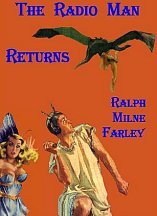 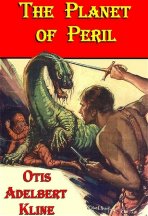 In short, it's fairly subtle, and quite possibly illusory, but there are signs of an incestuous trinity in Burroughs, Farleys and Kline’s visions of Venus, at least the shape of an argument that their worlds were, if not the same, then at least somewhat complementary and influenced by each other. And if we want to get very cute, there are a couple of interesting notions that one might play with to stitch the three writers universes together. Like Amtor and Zarovia, there is a common language on Farley's Poros. Oddly, the common language is a written form. The Cupians and Formians have no ears, thus their transmitted radio language is not phonetically related to sounds. On the other hand, they have a written language which is the same as that used by the Whoomangs and Vairkings. Where did this language come from? The Cupians have a legend that their people came from over the sea. The Whoomangs believe that their souls were originally from a human. The Vairking believe that they came from another world. Its clear in Farley's novels that the human societies of the Cupians and Vairking have a common, and perhaps off-world origin. It's also clear that the Whoomangs, Formians and Whistling Bees have acquired their language and perhaps some of their culture from the humans (humanoids exist on or have visited all three continents, the Formians/Whistling Bees seem confined to the one continent, therefore the Formians probably got language and culture from the humans and not the other way around). Does this suggest either Amtor or Zarovia? Maybe, maybe not, the evidence is not definitive. On the other hand, there is an interesting linguistic argument that we can make that goes beyond simply noting that all three societies feature 'universal languages.' Burroughs' Amtor sports a revolutionary cult called the Thorans, led by a mysterious leader named Thor. Meanwhile, the Zarovians of Kline venerate a prophet named Thorth. Thor and Thorth sound very close, perhaps related. Thorism may actually be a degenerate form of Thorthism. 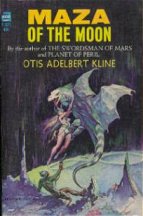 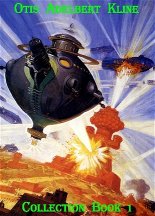 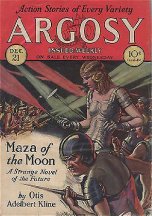
Well, this is all very nice for both Kline and Burroughs. How does it relate to Farley's Radio series? This is a stretch, but 'kar' appears to also be an ancient Barsoomian word, probably meaning people or children. And, fascinatingly enough, both the Cupians and the Vairking have a hidden religion called the 'Priests of Kar.' A religion which holds that the humans came from another world. Another odd overlap. There seems to be very little or no religion among the Cupians. At one point, Myles mentions God and they have no clue as to who this is. Equally, the Amtorians and the Zarovians are not big on religion either. Okay, its tenuous, to say the least. But it might hold some weight. There are other commonalties of course. Each series shows Venus as a hot tropical world, covered with oceans and swamps, inhabited by giant insects, ferocious reptiles and animals, beast men, and isolated outposts of civilization. Humans are ruled by monarchies and aristocracies and the culture loosely approximates ancient Greece (sometimes down to the Togas). Of course, these three writers were not alone in this vision of Venus. It was actually the common or 'shared' concept of Venus as set out by many writers of the pulp era, 1890 to 1940. But I'll canvas this in more detail some other time.
Locating Farley's Poros on Venus, or Cupia, Here I Come! I'll need to develop this at some length. But in the meantime, here are a few thoughts and observations. Myles Cabot makes no pretensions to having explored the whole of Venus. The adventures of his first two books are confined to what he describes as a 'continent' the land of Cupia, inhabited by humans, bees and ants. I'll assume, having yet to read these books, that this land is relatively well explored. In the Radio Man, we're not treated to much description. The Formians occupy the south, the Cupians the north, and the two are divided by a Berlin Wall. The most notable geographical feature is a large chasm filled with radio-emitting rocks called the Valley of Howling Death, which seems to run east/west and be part of the divide. It's not clear though, how big the Valley is, or if it is on a significant scale. In the Radio Beast, as Myles flees across country, we get a better window into the geography of the place. The south appears to be table-lands or plateaus, relatively flat or rolling country. The elevation slopes upwards, towards the north there is Lake Luno, which appears to be a medium-sized to small body of water. Cabot keeps his castle there, and the lake is large enough to conceal a small fleet of aircraft and elephant sized lobsters. But on the other hand, he's able to swim across it in a couple of hours. Beyond Lake Luno, but not apparently draining it, is the River Kar, which cuts through the mountains, ending at an apparent cliff, at which point, it becomes an underground river. The mountains are the Okarze mountains of the north, the continents only known mountain range. During The Radio Planet he describes two different points in Cupia as being about a thousand miles from each other. So we can assume that this land area is at least a thousand miles in diameter... Providing, that he's estimating a 'crow flies' distance, and not say, the length of the road as it follows the coast or dodges around a mountain range. So Cupia may be a continent, or it may be a subcontinental land mass of indeterminate size. My impression is that it isn't all that big in terms of land area, and is thinly populated. Cabot gets around fairly quickly, and the ruling city seems to be overtaken easily enough. We're looking at a population of perhaps hundreds of thousands, and not tens of millions. In the third book, he winds up on a second land mass and spends some months there. The land of the Vairkings and Roy. He describes this as a continent, but doesn't explore its dimensions in any real way. It has a mountain range in the north, and a broad interior plain. Again, the populations seem thin, although he may simply only be seeing a regional war. Still, the argument is that the land is thinly populated, because the Formians can establish a city on the coast without anyone really noticing. Finally, he has a quick visit to what he calls a third continent, the land of the Whoomangs (humans) but barely explores any of it at all. There are primitive roads and a city, not much description of the countryside, except to note that the plants are different. Cabot's sojourn is very brief, though he does return to the place in Radio Minds of Mars, and spends some time hiding in a hill country. Each of these lands is surrounded by boiling seas. Well, we know that the sea all around Cupia is boiling. We don't know that the seas all the way around the Vairking and Whoomang lands are boiling. Nor do we know that the seas are boiling all the way between the three land masses. It may be that only those areas bordering most closely to Cupia have boiling seas. The boiling seas, however, create an obstacle which makes for distinctive flora and fauna on each land. There is some crossover. Cupia records species found in both other lands. The Whoomang land has pterodactyl creatures which resemble species existing and extinct on Cupia. But Cabot (or Farley) makes a point in observing that each land has distinctive vegetation. There is one textual clue that suggests that these lands may not be full continents, or are, more likely, sub-continents: Transit. The Formians fly to the Vairking continent. Cabot flies from Vairking to Whoomang, and then to Cupia. The trouble is that these aircraft are not impressive. From the descriptions, they're loosely on a par with 1920s aircraft, which means that they are crude instruments indeed. Their motors burn alcohol, which isn't the best fuel. In short, they're rather primitive, low efficiency, internal combustion aircraft. A far cry from the anti-gravity ships of the Olba, or Carson's flying machine from Havatoo. This means that they don't fly very fast, they don't fly very high and they probably don't fly very long. Carson's aircraft, fueled by a super-efficient Amtorian power source, can fly halfway around the world and its technology is at least 1930s era and bolstered by the high state of some Amtorian mechanics. Cabot's aircraft? It's not going far. Therefore, the "continents" are probably grouped closely together. They may also be a lot smaller, more along the lines of subcontinental structures, or perhaps an archipelago of very big islands, like Indonesia or the Canadian Arctic. One thing we know for sure, is that Cabot is in the Northern Hemisphere of Venus. When trying to fly home, he flies above the first cloud layer, the upper layer parts, and he recognizes constellations and stars, including Orion, and the pole star. This is a northern hemisphere sky. So where are we on Amtor/Zarovia? Off the top of my head, I'm thinking that at least one of the lands is at the top of Anlap. Previously, in Unravelling Amtor, I took Anlap to be a 'north/south' continental mass, consisting of three sets of regios or highlands. Beta and Asteria Regio in the north. Phoebe Regio in the middle. And Themis Regio in the South. Let's take a look at the Raphael Lischman topographic hemisphere map. http://ralphaeschliman.com/Venus/vltopo24.jpg However, in Lost on Venus, Carson notes that Anlap has two sets of north/south mountain ranges. This posed a slight problem, since my original reconstruction of Anlap on the topographic maps gave it three mountain ranges. I solved this problem, of course, by ignoring it. Well, I might have been wrong. Anlap may actually consist only of the bottom two highlands, Phoebe and Themis Regio. It may be that the area I took to be the third highland, Beta and Asterial, the site of Anlap's third mountain range in the north, is actually a separate subcontinental mass, most likely the land of the Vairkings and the Roi. I suggest the Vairkings and Roi because at one point, Myles Cabot visits the Vairkings zoo and finds a remarkable assortment of very strange, large animals. This implies a fair bit of biological diversity, more than on Cupia, and possibly a larger land mass. There's also a fair bit of diversity in the terrain, from mountains and foothills to broad plains, and a variety of available minerals. There's a substantial diversity in the animal population of the Whoomang, so that might imply a large land mass. But overall, their lands seem smaller. The raw materials available for their roads, for example, are cruder. The Whoomangs clearly have minimal experience with humans suggesting that their land is smaller and more isolated. The Whoomangs appear to be between, but perhaps off to the side of, the Vairkings and Cupians. Meanwhile, the land of the Cupians is a healthy land mass, probably the only one described in sufficient detail. In which case the land of Cupia and the Whoomang, we have several possibilities. They too may be part of the Beta/Asteria regio region. We note that Beta and Asteria regio are separated by a vast chasm or canyon, called Devan Chasma. These deep canyons may be the source of the geological heat that causes the sea to boil. Just to the east of Asteria regio are a series of smaller but still impressive canyons or chasms, presumably undersea, presumably hot as furnaces, Latona, Hecate, Zverine and Sudanitsa. This probably makes for a violently hot region of sea. So, what does this mean? It's possible that the Beta/Asteria region is separated into two or more distinct land masses because of the chasm. Of course, even with Cabot's primitive aircraft, this should be a lot easier to fly over than it actually is. It's likely therefore that the land of Whoomangs and Cupians is somewhere else, to the east, in the regions made hot by boiling chasms. There are a few additional geographic candidates. To the north are Metis and Mmenosyne Regios, northern highlands, which presumably would be rendered temperate by the boiling seas. There are also fair sized island masses in this area, between Beta/Asteria and Metis/Mmenosyne. Places like Mokosha Mons. Or, moving due east, there are undescribed highlands among the chasms we've noted previously. Further east we come to Mentha Tholus and Sekmet Mons, a large volcanic island. And east of that is a distinctive area at the top of Ulfrun Regio called Bellona. Any of these land areas may be the home of the Cupians and Whoomangs. Overall, the region is one that we can identify as remote from the known Amtorian and Zarovian centers, and if the boiling seas are correct, fairly inaccessible to both. So, without trying to hard, we can locate all three series on the same planet. It's not terribly specific, I admit. But we can probably fit Farley's Poros into the same planet as Kline's Zarovia and Burroughs Amtor. And, by the same token, Farley's inner world of Radio Gun Runners and Radio Flyers fits neatly into Burroughs Pellucidar. But that's another discussion..... 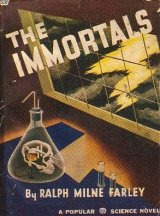 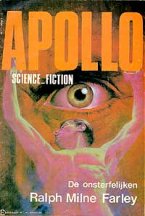 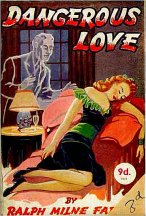 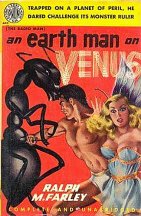
|
|
for Den Valdron's Fantasy Worlds of ERB |
![]()

![]()
![]()

![]()
BILL
HILLMAN
Visit
our thousands of other sites at:
BILL
and SUE-ON HILLMAN ECLECTIC STUDIO
ERB
Text, ERB Images and Tarzan® are ©Edgar Rice Burroughs, Inc.-
All Rights Reserved.
All
Original Work ©1996-2006/2010/2022 by Bill Hillman and/or Contributing
Authors/Owners
No
part of this web site may be reproduced without permission from the respective
owners.